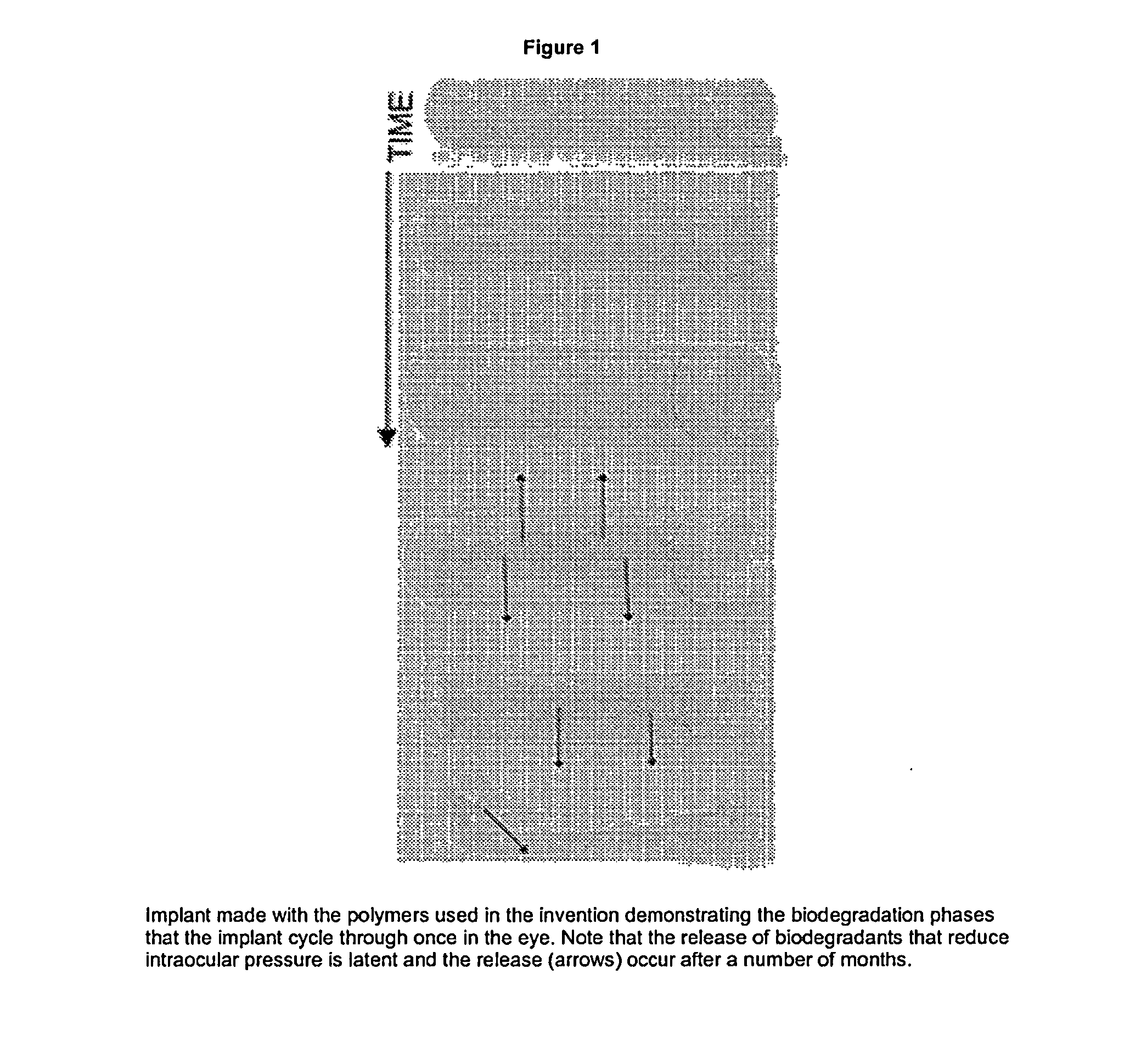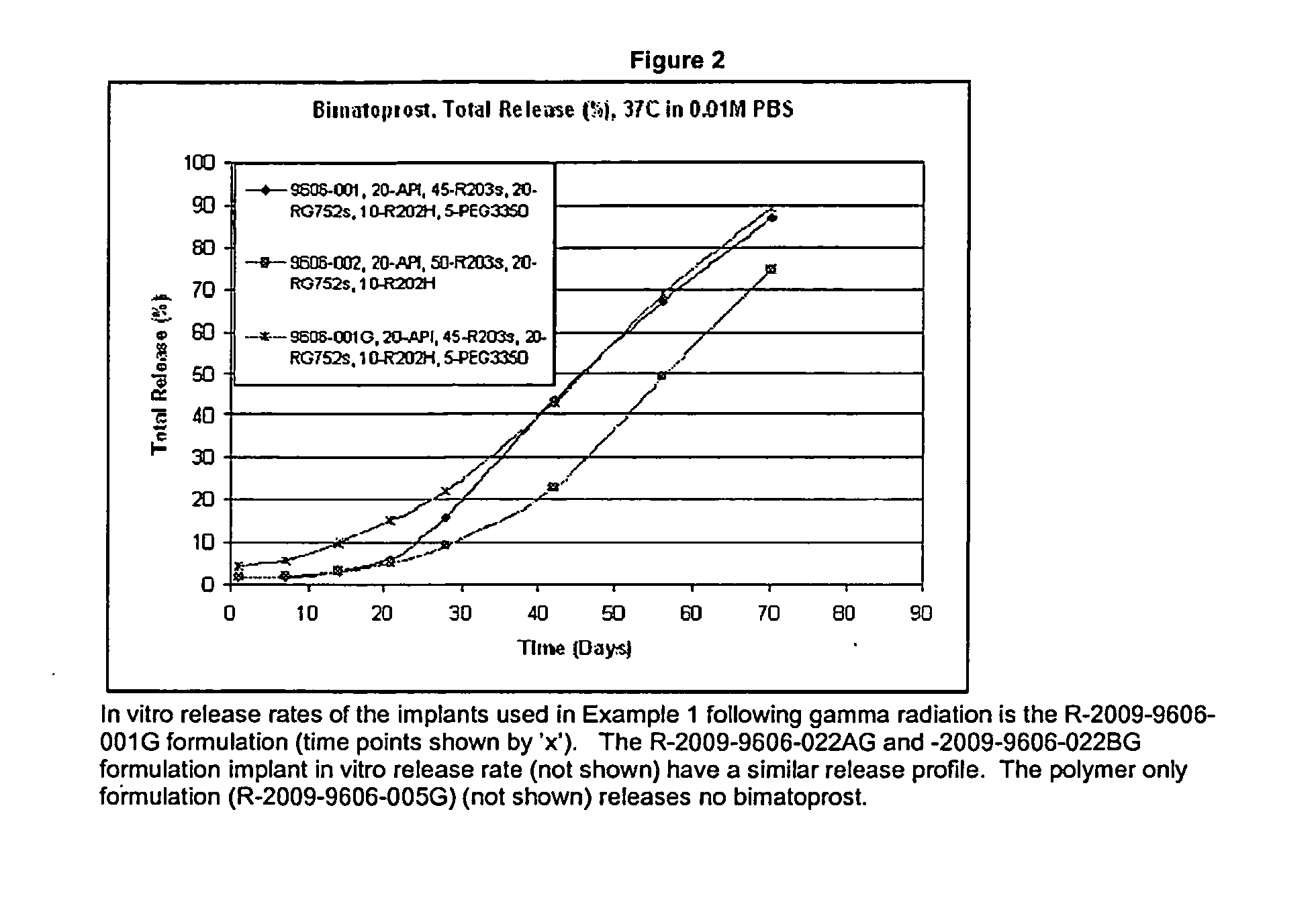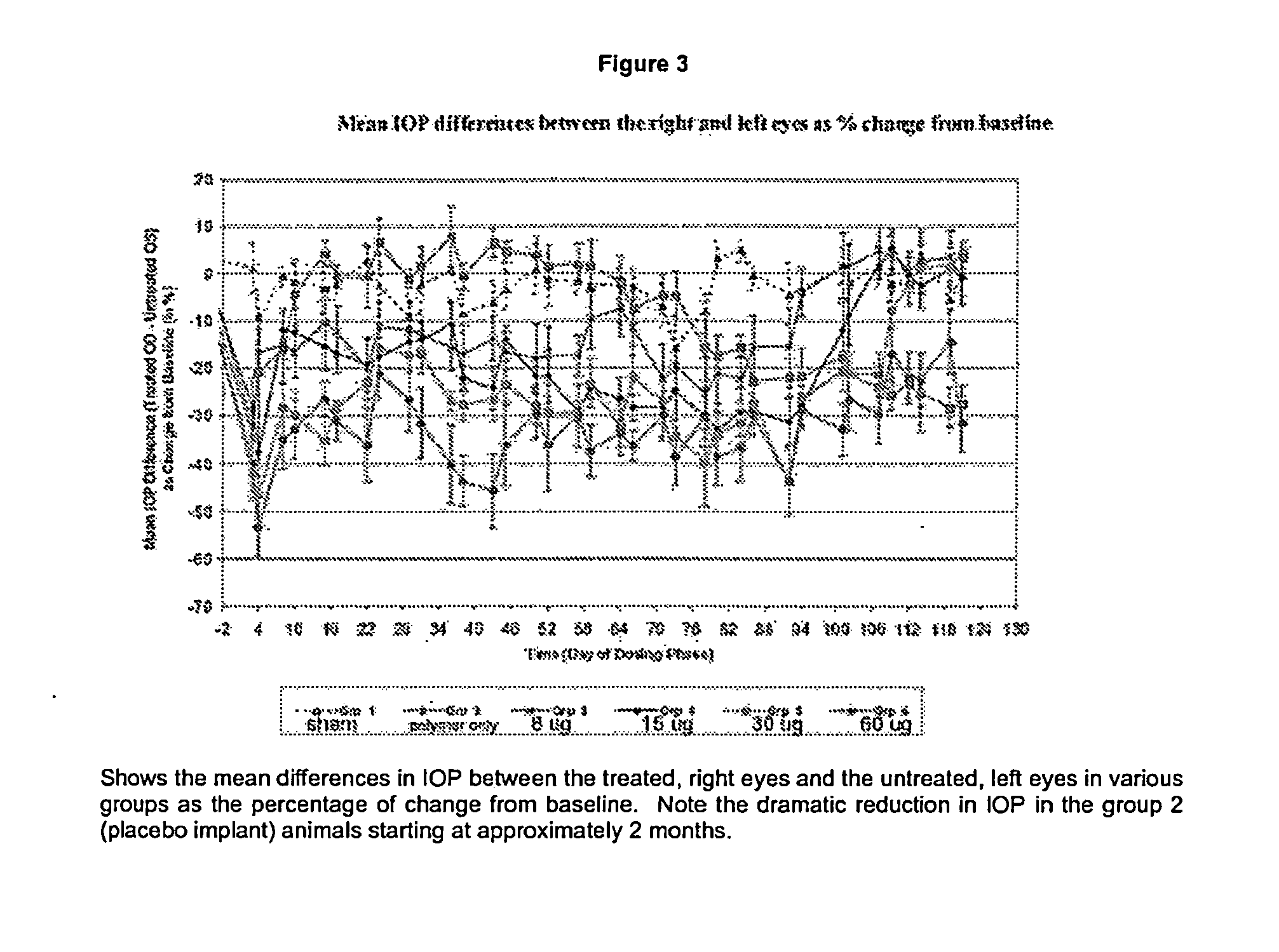Biodegradable polymers for lowering intraocular pressure
- Summary
- Abstract
- Description
- Claims
- Application Information
AI Technical Summary
Benefits of technology
Problems solved by technology
Method used
Image
Examples
example 1
[0048]Forty eight purebred beagle dogs were dosed with sufficient amounts of Bimatoprost IC DDS implants with a composition: API 20%, R203S 45%, R202H 10%, RG752S 20%, and PEG 3350 5% to deliver 8, 15, 30 and 60 μg / day. The implants were manufactured using a hot melt extrusion process. This formulation that has an in vitro release rate demonstrating that the duration of drug release is over approximately 3 months (See FIG. 2). Polymer only (no bimatoprost) implants comprised 56.25% R203s, 25% RG752s, 12.25% R202H, 6.25% PEG-3350). Intracameral injections were performed using pre-loaded applicators without complications and the IOPs were monitored over time.
[0049]FIG. 3 shows the mean differences in IOP between the treated, right eyes and the untreated, left eyes in various groups as the percentage of change from baseline (average values from Days −7 and −5). All error bars represent standard errors. With groups 3, 4, 5, and 6 which received implants with bimatoprost, there was a sig...
example 2
[0053]A dose response study was conducted to determine if different size polymer only implants would show differences in reduction of IOP.
[0054]Twelve beagle dogs were dosed in 1 eye with polymer, only, implants (56.25% R203s, 25% RG752s, 12.25% R202H, 6.25% PEG-3350) of various sizes (volumes of 0.12, 0.20, and 0.30 mm3). The intracameral injections were performed using pre-loaded applicators with either 25- or 27 G needles.
[0055]IOP reduction was demonstrated at all dose levels starting at approximately 2 months post-injection (FIG. 7). The IOP reduction from baseline values at 4 months was 12, 35, and 39% with the implants with volumes of 0.12, 0.20, and 0.30 mm3, respectively.
[0056]A dose-response relationship with regards to IOP reduction exists with synthetic aliphatic polyester implants without bimatoprost (i.e. polymer only implants).
example 3
[0057]Polymer only implants study in an ocular hypertensive (OHT) monkey model.
[0058]12 cynomolgus monkeys had trabecular meshwork laser accomplished to achieve elevated IOP using standardized techniques. Six monkeys received an intracameral injection of a bimatoprost 30 ug implant. An additional 6 monkeys received a polymer only implant comprising 56.25% R203S, 25% RG752S, 12.25% R202H, 6.25% PEG-3350).
[0059]IOP reduction from baseline was demonstrated with the bimatoprost 30 ug implant ranging between 20 to 30% for approximately 3 months (See FIG. 8). Starting at approximately 3 months post-injection, the polymer only implants reduced the IOP by approximately 40% from baseline.
[0060]IOP reduction was observed in the OHT monkey exists with synthetic aliphatic polyester implants without bimatoprost (i.e. polymer, only, implants).
[0061]In summary, polymer only implants containing synthetic aliphatic polyester polymers have a latent IOP reduction potential when placed into the eye. Th...
PUM
| Property | Measurement | Unit |
|---|---|---|
| Fraction | aaaaa | aaaaa |
| Fraction | aaaaa | aaaaa |
| Weight | aaaaa | aaaaa |
Abstract
Description
Claims
Application Information
 Login to View More
Login to View More - R&D
- Intellectual Property
- Life Sciences
- Materials
- Tech Scout
- Unparalleled Data Quality
- Higher Quality Content
- 60% Fewer Hallucinations
Browse by: Latest US Patents, China's latest patents, Technical Efficacy Thesaurus, Application Domain, Technology Topic, Popular Technical Reports.
© 2025 PatSnap. All rights reserved.Legal|Privacy policy|Modern Slavery Act Transparency Statement|Sitemap|About US| Contact US: help@patsnap.com



